Ants in the Garden: How to Fight Them [Complete Guide]
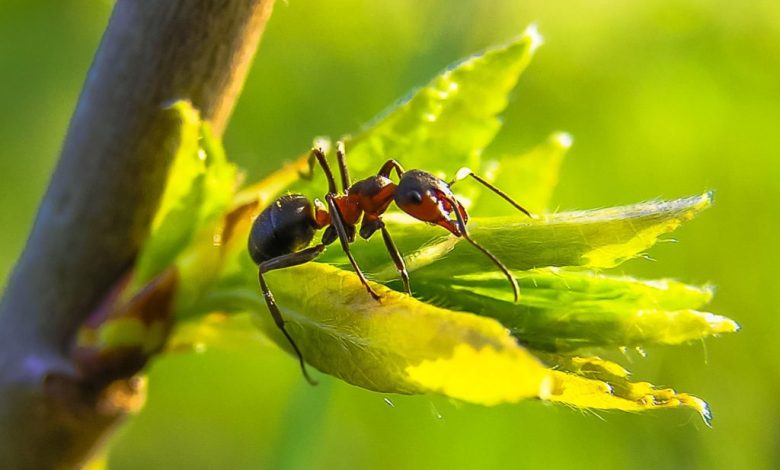
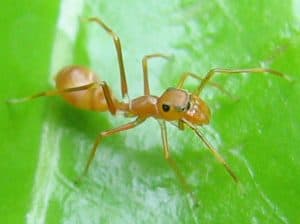 Although ants are insects that we associate with gardens and outdoor spaces, it is remarkable that they are not taken much into account when it comes to orchards and crops.
Although ants are insects that we associate with gardens and outdoor spaces, it is remarkable that they are not taken much into account when it comes to orchards and crops.
And it is that, in general terms, ants do not feed on crops, so they do not have a direct effect on them. Nevertheless,can indirectly affectas a result of their interaction with other insects with which they live in crops.
On the other hand, sometimes ants can be beneficial for crops, sincehelp aerate the soil and fertilize it; in addition to contributing to the dispersal of seeds and the pollination of flowers. Likewise, they can prevent the appearance of fungi and diseases, since they produce an anti-fungal compound through a microorganism that covers their entire body.
However, when ants become pests, they are a real headache for even the most experienced farmer. This becomes even more complex when we opt for non-toxic methods that are friendly to our crops and the environment in general.
For this reason, in this article we tell youthe simplest and most efficient wayto get rid of an ant infestation in your garden.
meeting the ants
When dealing with ants, it becomes essential to determine the species we are dealing with, as each species has different behaviors and preferences. Knowing them will be very useful to keep them away.
Let’s take a look at some of the most common:
odorous house ant
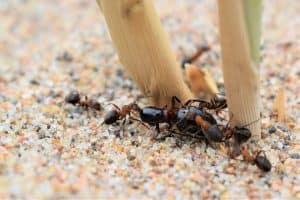 This type of ant is attracted to sweets and is usually found indoors. Their color is between reddish and dark brown, or black and they measure between 2.3 and 3.25 mm long.
This type of ant is attracted to sweets and is usually found indoors. Their color is between reddish and dark brown, or black and they measure between 2.3 and 3.25 mm long.
They leave a chemical trail of pheromones wherever they travel, allowing them to communicate with other ants in the nest. In addition, they usually send scouts.
However, it is not enough to eliminate the explorer, but we musteliminate pheromone trail. This can be achieved by spraying soapy water over the area where the ant has been crushed.
carpenter ant
Carpenter ants are commonly foundaround homes in wooded areas. They can measure between 6 and 12 millimeters long.
They are characterized by making their nest inside the wood, which often causes them to be confused with termites. They can be a real problem as they make satellite nests.
Also, they do not carry food back to their nests, so placing baits is of no use. To exterminate them, you have to exterminate the source, that is, the nest; but since they are found inside the wood, these can be very difficult to find.
It is most effective to look for piles of very fine sawdust or wood chips.
pavement ant
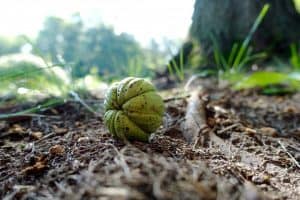 Pavement ants are usually around 2.5 to 3 mm long. In addition to sugar, they also consume foods such as meat, seeds, and greasy food. Their bodies are brown or black.
Pavement ants are usually around 2.5 to 3 mm long. In addition to sugar, they also consume foods such as meat, seeds, and greasy food. Their bodies are brown or black.
red fire ants
Fire ants are probably the last type of ant we wouldn’t want to deal with. As their name implies, their bodies are red and shiny. They measure around 5mm in length and their sting can be quite painful, so it is best to avoid touching them.
Which plants are the most vulnerable to ant attack?
An infestation of ants can attract other pests, mainly aphids, which affect a large number of crops; among them, melon, strawberry, blackberry, peach, cotton, lettuce, tomato, cauliflower, cucumber, zucchini, spinach, chili and a wide variety of citrus fruits.
Ants also establish beneficial relationships with cochineals , which affect grapevine, coffee, mango, apple, pear, shade banana, pineapple, citrus varieties and many more .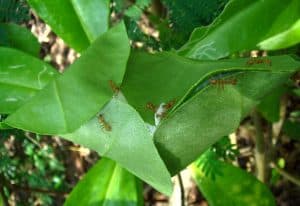
Damage caused by ants on plants
- They reduce the aesthetic and ornamental value.
- They produce semicircular cuts on the leaves, stems and flowers.
- They modify the flowering date.
- They can be disease vectors, leaving open wounds on plants through which different types of phytopathogens such as fungi, viruses or bacteria can enter.
- They produce a gradual depletion in the carbohydrate reserve.
- They cause attacks with devastating effects, they can defoliate a small bush in a single night.
How to combat ants in crops?
The first thing we must dois to follow the trail.
This will allow us two things: the first, to know where they are entering our house. The second, we can find the anthill.
In greenhouse or indoors
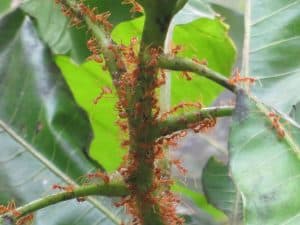 This of courseit’s much simplerif we sow under controlled conditions, in a greenhouse.
This of courseit’s much simplerif we sow under controlled conditions, in a greenhouse.
In this case, once we have located the access point, what we must do is block it. Seal the hole through which they penetrate with anything that prevents them from entering: you can use Vaseline, glue, silicone, adhesive tape, etc.
Seal, also, all those points that could serve as future entrances. Look for cracks, holes, or any gaps near the original access point. Use foam rubber or any adjustable barrier to seal the gaps under the door and windows.
To eliminate the ants that have remained inside, moisten a rag in soapy water and rub it over the row of ants, as many times as necessary until we have got rid of each and every one.
Protect your plants by following the same recommendations foroutdoor gardens.
outdoors
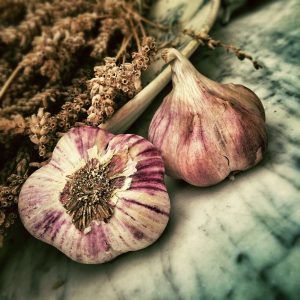 Protect your garden by using natural repellants around your plants. These can be: corn flour , vinegar, lemon juice, coffee grounds, soapy water, bicarbonate of soda and sugar, pepper, chalk and talcum powder.
Protect your garden by using natural repellants around your plants. These can be: corn flour , vinegar, lemon juice, coffee grounds, soapy water, bicarbonate of soda and sugar, pepper, chalk and talcum powder.
Likewise, you can also plant some ant-repellent plants, such as mint, sage, lavender, pyrethrum, pennyroyal, citronella, nasturtium and garlic.
Finally, Neem oil is a very effective insecticide.
find the nest
Once you have found the nestwe must keep in mind something essential: Avoid attacking it in any way, either by trying to spray it with some kind of insecticide, or any other method, as this can cause the surviving ants to establish new colonies, thus complicating the problem.
It is best that you try to lure the nest with baits, once outside, you can spray them with Neem oil, boiling water or soapy water to get rid of them.
Another very effective technique is to make a cork seedbed and place it upside down, wetting it a couple of times a week. In a short time, the ants will move their nest there, which will make their elimination easier.
Repeat the operation untilYou have completely eliminated them.

![Photo of Kaki Irrigation: [Needs, Frequency and Procedure]](https://www.complete-gardening.com/wp-content/uploads/2021/06/kaki_arbol_1623360784-390x220.jpg)
![Photo of Deciduous Forest: [Concept, Characteristics, Fauna and Flora]](https://www.complete-gardening.com/wp-content/uploads/2021/06/bosque_caducifolio_1562323734-390x220.jpg)

![Photo of Linden: [Characteristics, Planting, Care, Irrigation and More]](https://www.complete-gardening.com/wp-content/uploads/2022/08/linden-characteristics-planting-care-irrigation-and-more-390x220.jpg)